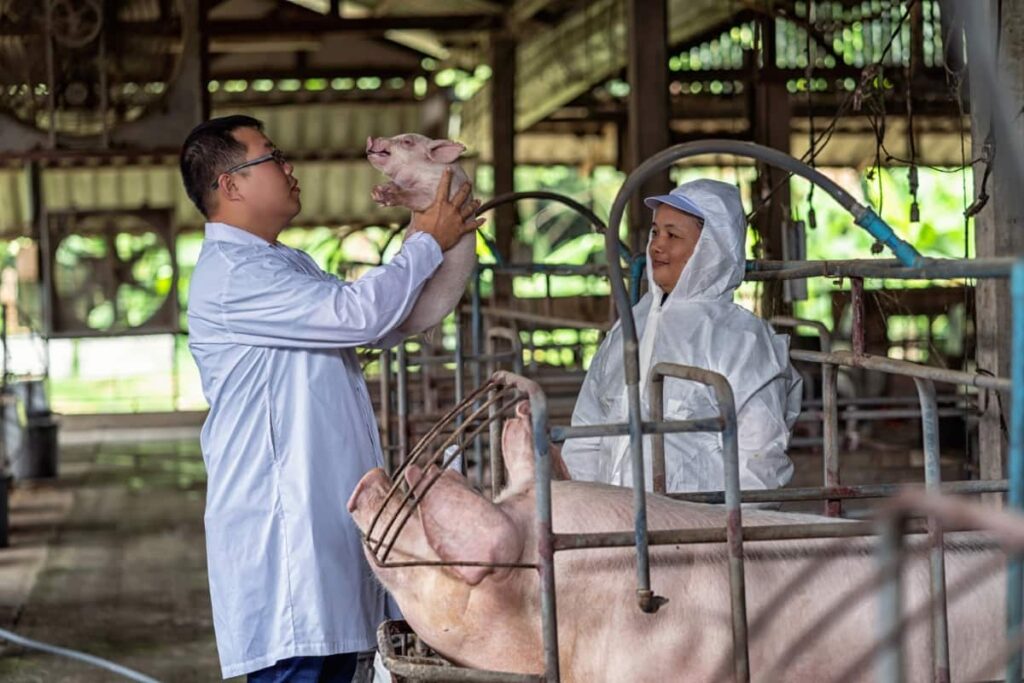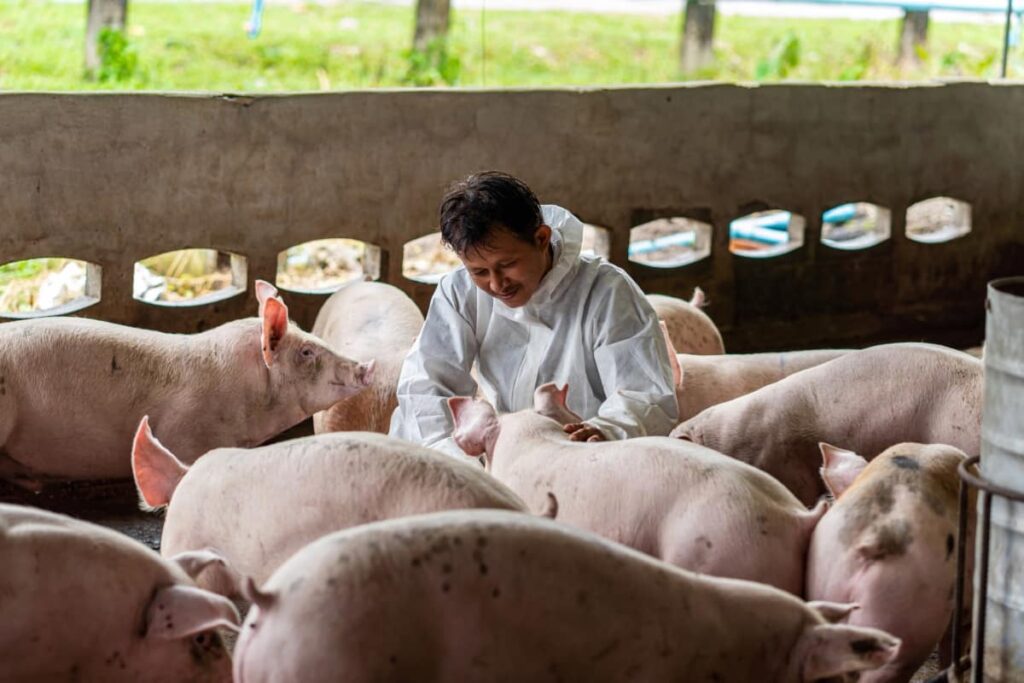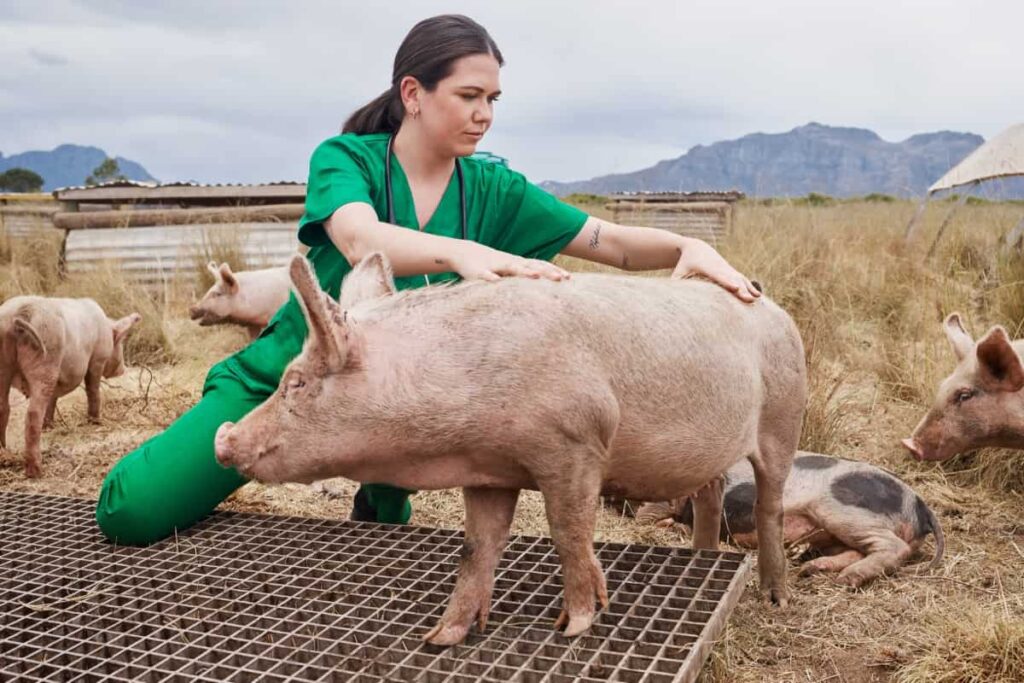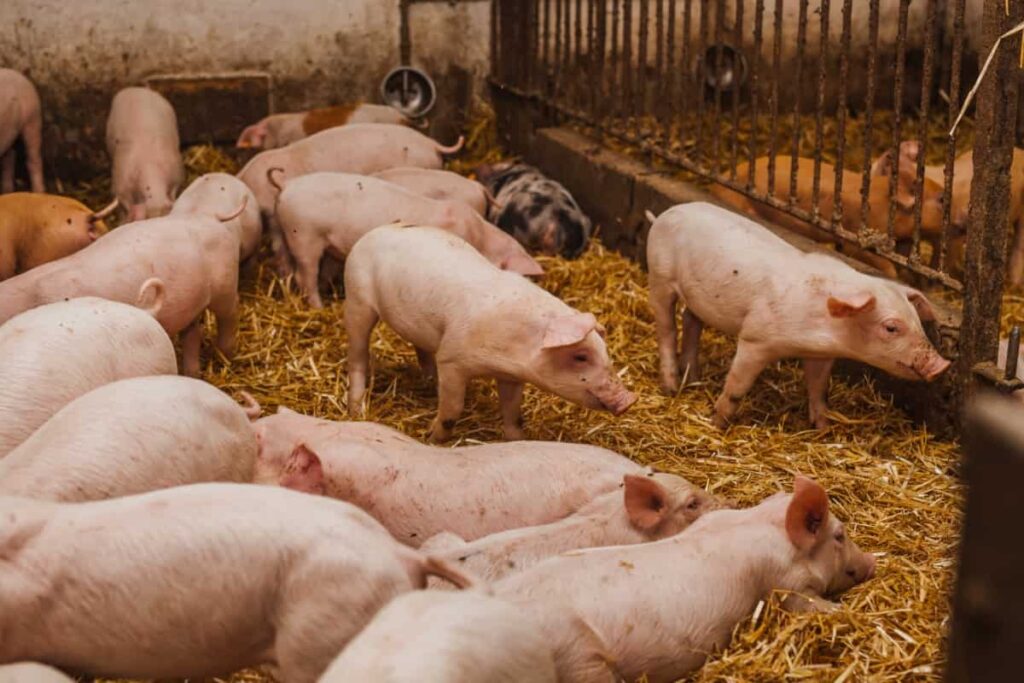Pig fattening is essential in the livestock industry as it plays a main role in meeting the demand for pork products worldwide. By focusing on efficient feeding strategies and nutrition, farmers can maximize growth rates and overall profitability. This process involves carefully selecting the right breeds known for their fast growth and meat quality.

Breeds Selection for Optimal Fattening
Different breeds have varying growth rates, feed conversion efficiency, and meat quality characteristics. Some popular pig breeds for fattening include Duroc, Hampshire, Yorkshire, and Landrace.
Duroc pigs have a fast growth rate and excellent meat quality with marbling. Hampshire pigs are recognized for their lean muscle mass and efficient feed conversion. Yorkshire pigs are favored for their large frame size and good maternal instincts. Landrace pigs excel in producing high-quality pork with desirable traits. Each breed has its unique advantages and considerations when it comes to fattening them effectively.
Nutritional Requirements and Diet Formulation
Pigs need a balanced diet to ensure optimal growth and health. Nutritional requirements vary depending on the age, weight, and breed of the pigs. Formulating the right diet involves a mix of proteins, carbohydrates, vitamins, and minerals tailored to meet these specific needs.
A well-balanced diet not only supports growth but also helps prevent diseases and improve overall well-being. Factors like energy content, protein levels, fiber sources, and essential nutrients should be carefully considered. Consulting with a veterinarian can help formulate a customized diet plan that caters to your pigs’ unique requirements.
Feeding Strategies for Maximum Growth
Providing a good diet is essential to ensure optimal development and weight gain. It’s important to formulate diets that meet the nutritional requirements of the pigs at different stages of growth. This includes proteins, carbohydrates, fats, vitamins, and minerals in the right proportions.
Feeding schedules should be consistent to avoid stress and promote a healthy appetite. Splitting meals into multiple feedings throughout the day can help improve digestion and nutrient absorption. Monitoring feed intake and adjusting quantities based on growth rates is key to maximizing efficiency. Regularly assessing body condition scores can help you fine-tune feeding strategies for each pig. Consult with a nutritionist or veterinarian to tailor diets specifically for your pigs’ needs.
In case you missed it: Guide to Raising Chester White Pigs: Discover Breed Facts to Growth Management

Housing and Environment Management
Providing pigs with comfortable and clean living spaces is essential for their well-being and growth. The housing should be spacious enough to allow the pigs to move around freely without feeling cramped. Proper ventilation is also important to ensure good air quality and prevent respiratory issues. It’s vital to maintain a consistent temperature in the pig house, especially during extreme weather conditions.
Regular cleaning of the pig pens is necessary to prevent the spread of diseases. Additionally, providing bedding material like straw or sawdust can help keep the pigs warm and dry. Minimizing noise and disturbances can help create a stress-free environment for the pigs, which can improve their overall health and productivity.
Health Monitoring and Disease Prevention
Regularly checking your pigs’ health status is essential to catching any potential issues early on. This includes observing their behavior, appetite, and overall well-being. Implementing a proactive approach to disease prevention can save you time, money, and, most importantly, the health of your animals.
Maintaining good hygiene practices in the pig housing area is vital in preventing diseases from spreading. Keeping the environment clean and dry helps reduce the risk of infections. Additionally, providing a good diet rich in nutrients boosts the pigs’ immune systems, making them more resilient to illnesses.
Consulting with a veterinarian regularly can also aid in disease prevention by allowing for early detection of any health concerns. Vaccinations and proper medication protocols should be followed to safeguard your pigs against common diseases prevalent in swine production.
Growth Performance Monitoring and Management
Monitoring the growth performance of your pigs is crucial to ensure they are on track for optimal fattening. Regularly weighing your pigs and keeping detailed records will help you track their progress over time. By analyzing this data, you can adjust feeding strategies and make informed decisions to maximize growth.
Managing your pigs’ growth involves more than monitoring weight gain. Observing their overall health, behavior, and feed intake is essential in identifying any issues that may hinder their development. Providing a stress-free environment with proper ventilation and adequate space will also contribute to healthy growth.
Implementing a structured management plan will help you stay organized and proactive in addressing any challenges that may arise during the fattening process. Consulting with experts or experienced farmers can provide valuable insights into effective growth management techniques.
In case you missed it: Native Pig Farming: How to Raise Native Pigs for Profit

Ethical and Welfare Considerations
Ethical and welfare considerations play a significant role in ensuring the well-being of the animals. Providing pigs with proper care, adequate space to move around, and a clean environment is essential for their overall health and happiness. Ethical practices involve treating pigs with respect and dignity throughout their lives. Welfare considerations extend beyond just meeting basic needs; they involve going above and beyond to ensure that pigs are living comfortably.
Investing in good quality housing facilities that promote natural behaviors like rooting and social interactions among pigs can greatly improve their welfare. Regular monitoring of their health status, addressing any issues promptly, and offering enrichment activities are all part of maintaining ethical standards in pig farming.
Marketing and Economics of Fattened Pigs
Understanding market demand and trends is crucial in determining the pricing strategy for your products. Market research can help you find potential buyers and establish profitable partnerships within the industry.
Efficient cost management plays a significant role in maximizing profits. Tracking expenses related to feed, housing, healthcare, and other inputs are essential for optimizing financial performance. By implementing cost-effective strategies without compromising on quality, you can enhance the profitability of your pig-fattening venture.
Building a strong brand reputation through consistent product quality and excellent customer service can differentiate your products from competitors in the market. Utilizing digital marketing tools and platforms can also help promote your fattened pigs to a wider audience, increasing sales opportunities and revenue potential. Stay updated on economic trends, government regulations, and consumer preferences to adapt your marketing strategies accordingly.
In case you missed it: Pig Housing Design: How to Create Comfortable and Efficient Living Spaces for Pigs

Innovations and Future Trends in Pig Fattening
Technology is revolutionizing how pigs are raised and fattened for the market. From automated feeding systems to smart sensors monitoring pig health and growth, the future of pig farming looks promising.
Genetic advancements are reshaping the landscape of pig breeding, focusing on developing breeds that efficiently convert feed into muscle mass. This leads to better quality meat while reducing environmental impact. Additionally, precision nutrition techniques are being implemented to tailor diets based on individual pig needs, optimizing growth rates and overall health.
Environmentally sustainable practices, such as utilizing waste products for feed or energy generation, are gaining traction in the industry. By prioritizing health monitoring, disease prevention, and ethical considerations, you not only ensure the well-being of your animals but also contribute to sustainable farming practices.
- Profitable Village Farming Business Ideas in 2024
- High-Yield Aquaculture: Fast-Growing Fish for Farming
- Effective Fish Pond Construction Techniques for Beginners
- Irrigation and Water Management in Pineapple Farming
- Blossom to Harvest: Mastering Flowering and Pollination in Papaya Farming
- Pig Fattening Essentials: From Selection to Sale for Beginners
- Raising Wagyu Cattle: A Complete Guide for Premium Beef Production
- Soil Types and Their Water Holding Capacity
- Optimizing Irrigation Schedules for Coconut Groves for Enhanced Yield
